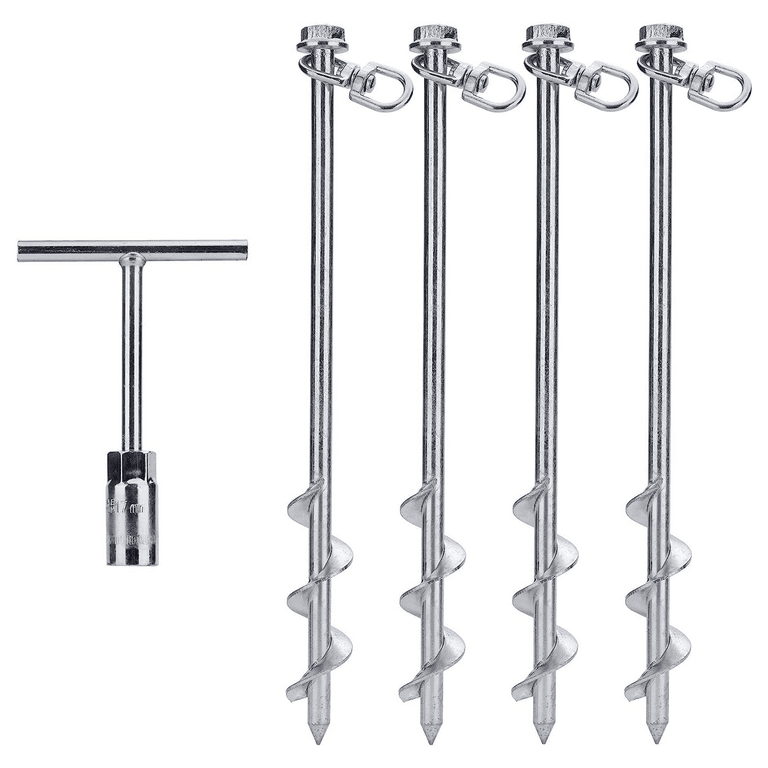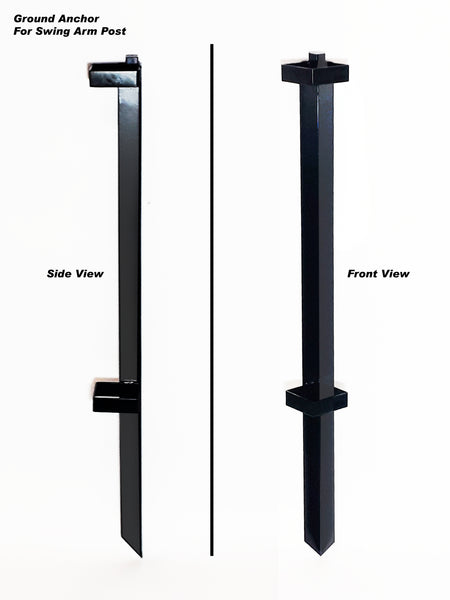Comparing Various Ground Anchor Models to Find the Ideal Match for Secure Installation
Comparing Various Ground Anchor Models to Find the Ideal Match for Secure Installation
Blog Article
Explore the Various Kinds of Ground Support for Your Following Job
When embarking on a building or landscaping project, comprehending the numerous kinds of ground anchors available is critical to making certain both security and resilience (Ground Anchor). From auger anchors, which master varied soil problems, to risk supports designed for momentary installments, the alternatives are various. Furthermore, concrete and screw anchors present special advantages in particular scenarios, while deadman anchors are customized for applications requiring resistance to side forces. The choice of a proper support type can dramatically influence the overall success of your task, triggering further exploration into their particular benefits and applications.

Auger Anchors
Auger supports are a popular option in various building and landscaping tasks due to their special layout and reliable securing abilities. These supports are composed of a helical screw-like shaft that is driven into the ground, enabling for a safe and secure hold. The spiral style helps with very easy installment and optimizes resistance against side forces, making auger anchors especially efficient in applications such as fencing, momentary frameworks, and erosion control.
The setup procedure of auger anchors is reasonably straightforward. Auger anchors can be quickly removed and recycled, which includes to their cost-effectiveness and sustainability.
One of the substantial benefits of auger supports is their capacity to distribute loads equally across the bordering dirt, minimizing the danger of soil disruption and decreasing environmental impact. In addition, they are much less susceptible to heaving or loosening over time contrasted to typical anchoring approaches. As a result, auger supports are an exceptional choice for jobs needing sturdy and reliable anchoring services.

Stake Anchors
When it pertains to protecting structures in a selection of outside applications, stake anchors provide a straightforward and dependable service. These supports are normally built from long lasting products such as steel or aluminum, developed to endure ecological tensions while giving optimum security. Their straightforward design enables fast setup, making them an excellent selection for permanent or short-term anchoring requirements.
Stake anchors are especially valuable in protecting outdoors tents, covers, and various other lightweight frameworks versus wind and weather condition. They work by being driven right into the ground at an angle, producing a strong hold that withstands pull-out pressures - Ground Anchor. The efficiency of stake supports relies on several elements, consisting of dirt type, wetness material, and the angle of installment
For included safety and security, several stake supports include add-on points for ropes or bands, enabling stress modifications as essential. In applications such as landscaping or building and construction, they can efficiently support devices or frameworks on unequal terrain. Overall, risk anchors supply a versatile and cost-effective remedy for protecting numerous outside setups, making them a favored option for service providers and DIY lovers alike.
Concrete Anchors
Concrete supports offer a robust solution for safeguarding frameworks to concrete surface areas, making sure stability and safety in various applications. These anchors are crucial for jobs ranging from domestic constructions to large-scale commercial installments. They come in various kinds, including growth anchors, sticky supports, and undercut anchors, each developed for details lots requirements and environmental conditions.
When mounted,Development anchors depend on mechanical devices to Discover More Here hold the concrete. They are perfect for medium to heavy-duty applications. Glue supports use high-strength epoxy or material anonymous to bond the anchor to the concrete, using remarkable load-bearing capacities, particularly in broken concrete situations. Undercut supports develop an unique shape within the concrete, supplying exceptional holding power, specifically in applications where tensile loads prevail.
When performed appropriately, concrete anchors substantially improve the structural honesty of different jobs, making them indispensable in modern building and construction techniques. Recognizing the particular demands of your project will help in selecting the best type of concrete support for the job.
Screw Anchors

Screw supports are a versatile securing remedy that can be effectively used in a selection of applications where standard concrete supports might not be adequate. These anchors contain a helical layout that permits them to be conveniently driven into the ground, making them excellent for usage in soil and other substrates. Their distinct framework supplies outstanding holding power and resistance to pull-out pressures, making them appropriate for various projects, from landscape design to structural assistance.
Among the key benefits of screw supports is their simplicity of installation. They need minimal equipment and can typically be installed without the need for excavation, which conserves both time and labor prices. Additionally, screw anchors can be removed and recycled, using a sustainable option for momentary applications.
Screw anchors are especially valuable in areas where soil problems are testing, such as loose or sandy dirts. Their capability to be installed at differing midsts enables customization based upon certain project requirements. Generally, screw supports supply a reliable and reliable anchoring method, making them an excellent option for professionals and engineers seeking reliable solutions for their projects.
Deadman Anchors
Deadman supports work as a durable solution for supporting frameworks in difficult conditions, especially where traditional anchoring techniques might drop brief. These anchors are composed of huge, heavy items buried underground, which produce resistance versus lateral forces. The design normally entails a horizontal component, such as a block of concrete or a metal plate, buried in the soil, to which wires or straps are connected.
The effectiveness of deadman supports depends on their capacity to disperse lots over a larger area, reducing the risk of failure in unstable dirt conditions. They are particularly advantageous in applications from this source such as keeping walls, short-term structures, and incline stablizing, where dirt motion can jeopardize the stability of the structure.
Installation of deadman supports requires careful planning to guarantee they are placed at the appropriate deepness and orientation, optimizing their load-bearing capability. While they may need even more labor and material than lightweight anchors, their dependability in damaging problems makes them very useful for long-term projects. Deadman supports are functional and can be adjusted to different applications, making them a go-to selection for designers dealing with special difficulties in their jobs.
Verdict
Auger anchors excel in diverse soil problems, while risk supports fit temporary applications. For concrete surfaces, growth and adhesive anchors give reputable options, and screw supports offer versatility in difficult surfaces.
Furthermore, concrete and screw supports existing unique advantages in certain scenarios, while deadman supports are tailored for applications calling for resistance to side pressures - Ground Anchor.Auger supports are a preferred selection in numerous building and construction and landscaping projects due to their unique style and efficient anchoring capabilities. They come in various types, consisting of growth supports, adhesive anchors, and undercut supports, each designed for certain tons requirements and ecological conditions
Adhesive supports make use of high-strength epoxy or resin to bond the anchor to the concrete, providing premium load-bearing capacities, especially in split concrete situations. In general, screw anchors supply a reliable and trusted anchoring method, making them a superb option for designers and specialists seeking efficient services for their tasks.
Report this page